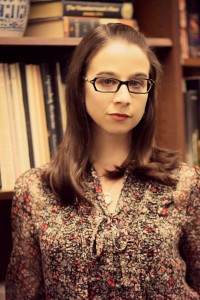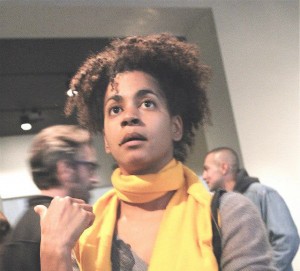 Aisha Sabatini Sloan’s “Ocean Park No 6” appeared in the 2015 issue of the Sierra Nevada Review, and was one of our nominees for the Pushcart Prize. The essay explores the grief of Juliette, a friend of Sloan’s, after the death of Juliette’s son Ramin. The essay weaves the exploration of her grief with an exploration of artists such as Joan Didion, Michael Ondaatje, Richard Diebenkorn, and others, creating a tapestry that explores how art and grief collide.
Aisha Sabatini Sloan’s “Ocean Park No 6” appeared in the 2015 issue of the Sierra Nevada Review, and was one of our nominees for the Pushcart Prize. The essay explores the grief of Juliette, a friend of Sloan’s, after the death of Juliette’s son Ramin. The essay weaves the exploration of her grief with an exploration of artists such as Joan Didion, Michael Ondaatje, Richard Diebenkorn, and others, creating a tapestry that explores how art and grief collide.
Sloan is based in Tuscon. Her book, The Fluency of Light: Coming of Age in a Theater of Black and White, was published by the University of Iowa Press in 2013. Her work has been or will be featured in Ninth Letter, Identity Theory, Michigan Quarterly Review, The Southern Review, Guernica, The Offing and Ecotone.
A contributing editor for Guernica: A Magazine of Art & Politics, she has taught creative writing and literature at the University of Arizona Poetry Center, Carleton College and the University of Michigan’s New England Literature Program.
**
Brandon Dudley: I wondered if you could talk a little bit about the creative process behind your essay, “Ocean Park No. 6.”
Aisha Sabatini Sloan: It was a long time coming. I had an idea for a project, a broader project, that got sparked when Anne Waldman came to speak at the University of Arizona Poetry Center. She had this really moving description of coming up with an idea for a poem while being in a place in Paris where a young child had been discovered and taken to a concentration camp. I was moved by the idea of visiting locations where something devastating had happened.
Then, I was on the phone with my mom when she was at our friend Juliette’s house, and I was talking about the project, and I just sort of imagined she [Juliette] would be a part of it. That’s where it started, with this almost spiritual beginning, of wanting to visit places of, not trauma exactly, but loss, intentionally, in the web of my life, and she was a really obvious one.
And I also wanted to have a more extensive, intimate research process. I didn’t want it to just be about reading and making connections in the comfort of my own living room. I liked the idea of spending a lot of time thinking about something with someone. And it was interesting to work on something over so long a period of time that was both a creative project and a personal project. We had conversations over the course of a few years, and they weren’t any different than conversations that we had before that, I was just intentionally curious about making sense of something with her. In some ways the creative process was based on her, because she had this curiosity about the connection between Michael Ondaatje and Richard Diebenkorn, but also Wallace Stegner.
In some ways it was a failed project, because I didn’t fully investigate all angles of it, but the creative process was based on following her [Juliette’s] own lines of inquiry and where her grief intersected with her creative interests and the things that resonated with her artistically. She mapped it out for me and I was trying to look into these overlaps where her own experience of say, Diebenkorn intersected with Ondaatje, and it was interesting to map that and actually discover whether or not they made any sense together.
BD: That’s interesting because the structure of your piece was one of the things that I really loved about it. I was wondering how you came up with the different elements that you braided together, and it sounds like you didn’t actually come up with them, it was created through following Juliette.
So, that sort of braided structure with all these different topics seems to be one that’s fairly popular in nonfiction lately. I was wondering if you could talk a little about why that might be.
AS: Most of my essays, the ones in my book especially, follow that kind of pattern. One of the ways that I learned to trust in the magical intersectionality of the world was from growing up listening to Juliette make sense of things, so obviously I would use a structure that honored her particular brand of seeing, or intelligence. But braiding essays is a structural approach that I’ve been fascinated by for awhile—or collaging, lyric—following associative leaps and finding ways that these riffs are actually less tangential than you’d originally thought.
But braiding isn’t new. Joan Didion has been weaving personal narrative and politics and current events for years. I notice that now that everyone’s doing it, I have started to feel resistance. In fact, I was part of a reading in March called: “Don’t Call it Lyric: Inquiry, the Essay and Independence” with Amarnath Ravva, Brian Blanchfield and Maggie Nelson. It sounds more militant than I think it actually was, in spirit, but the title was informed by a desire to push back against the presumption that as soon as a certain approach becomes fashionable, we forget that there are still a million ways to approach the page.
So I have started to really question, at the start of a piece, whether braiding is what an essay is actually calling for. You still have to synthesize things and find your voice. I think that nonfiction allows for so much formal play because the concept of truth telling is so inherently political, so psychologically fraught. So the way you prevent yourself from lying or warping or censoring the truth might look different from day to day.
BD: I was wondering if weaving all those different elements together made it easier to access the emotional core of the essay, which is the death of Ramin, Juliette’s son, because it seemed like a fairly emotional topic.
AS: I don’t know that it was hard to write about because it was emotional, necessarily. I cry almost every time that I write. I write toward, or out of, emotion most of the time. For this essay, though, I was trying to figure something out about what Juliette taught me, and part of what she taught me was about loss, but the other half of it was she taught me about beauty. She’s been an artistic mentor my whole life and I think touching that vulnerable place of grief with her while also wondering about how she relates to beauty gave the whole inquiry a foundation or intentionality.
BD: One of the elements that came up frequently in the essay was Joan Didion. Is she a major influence on you? Who are some other influences?
AS: Ever since I was in high school Joan Didion was the person who got me interested in nonfiction. Reading Blue Nights was a huge influence on my experience of talking with Juliette. Michael Ondaatje was formative for me—just holding Coming Through Slaughter in my hands makes me so inspired I can barely stand it. Maggie Nelson’s Bluets and The Argonauts and The Red Parts were all pivotal reads. I practically dissociated when I finished Notes from No Man’s Land by Eula Biss years ago. Fanny Howe’s Winter Sun. Anne Carson’s Decreation. I love Photocopies by John Berger. Regarding the Pain of Others by Susan Sontag. James Baldwin’s essay collection Price of the Ticket was a bible for me for many years.
BD: What are some projects that you’re working on now?
AS: I share my father’s paranoia about talking about a project too early, I feel like it jinxes it.
BD: Is your father a writer, too?
AS: Yeah, he’s a writer, and he worked for many years as a photojournalist. The whole sort of associative thing, talking about different threads, he was my first influence in terms of that. He’s always connecting things and interviewing people and has twelve books that he’s reading, and a movie on, and all that. I feel like in a lot of ways that that formal influence was pretty significant.
BD: You said you’re teaching as well. Where do you teach, and how do you think teaching influences the writing, and how does your writing influence your teaching?
AS: I’ve been teaching for the past nine and a half years or so. I think I learned a lot about my writing by trying to explain how to do it on a pretty basic level to other people. I taught a creative writing and a literature class at my alma mater, Carleton College, this time last year. And then right before that, the University of Michigan has this program, the New England Literature Program, where you go out into the woods for a couple months and read and write in a journal and there’s no technology. I’ll be doing that again next year. Right now I teach fifth, sixth, seventh and eighth graders in a residency program that the University of Arizona Poetry Center facilitates in middle schools and elementary schools in Tucson. It has been a huge heart opener. I absolutely love it. Many of my students are refugees and I feel so honored to even share space with them, they are such incredible human beings.
BD: That’s interesting. I teach high schoolers, mostly sophomores, and I don’t know how I’d handle teaching middle schoolers. Those younger ages seem pretty tough. But high schoolers are pretty tough. Who knows, maybe they’re the same.
AS: I wonder if college freshman and high school sophomores are that different. Well, that’s not fair. Some of my students have been far more mature than I’ll ever be. But teaching freshman composition can feel a bit like recess.
BD: I hope, when I’m done my MFA, to at least teach at the college level part-time. So I’m curious how different they really are. I’m hoping they’re at least a little more motivated than high school sophomores.
AS: I think it depends. I think it’s always amazing to remember that you actually have some control over that. I get so jaded that I forget that my own interest in something could open something for them. You know, I might give up before I’ve started, but they’ll read something and become sort of entranced by the language and I remember, oh, yeah, we get to try every time to get them as excited as we are.
BD: Could you recommend one writer or one essay that, if you could recommend them or it and say “You have to read this,” who would it be?
AS: I just finished Wendy S. Walters’ Multiply/Divide, I think that book is doing something remarkable to the question of nonfiction. I just started reading Dodie Bellamy’s When the Sick Rule the World, Patti Smith’s M Train, and Eileen Myles’ Chelsea Girls and I’m loving them all. White Girls by Hilton Als sort of rocked my world. I am a huge fan of Fred Moten, Jen Hofer, Eunsong Kim, Bhanu Kapil and Claudia Rankine. And my friends are pretty amazing, too: Arianne Zwartjes’ Detailing Trauma and Beth Alvarado’s Anthropologies were really influential for me. Brian Blanchfield just published an amazing essay in Harper’s called “There’s the Rub.”
BD: Is there anything you wanted to talk about, or that you hoped I would ask about but didn’t?
AS: I’ve been seeing these conversations about the literary world through Facebook, and I was feeling pretty disenchanted for a little while just about the sense of deflation and frustration that a lot of writers of color are feeling right now in the world of publishing, but there was this great conversation on the Poetry Foundation web site called “Talking About What We Don’t Talk About: Roundtable with Eunsong Kim, Amy King, Lucas de Lima, Hoa Nguyen, Hector Ramirez, Metta Sama, Nikki Wallschlaeger.” And Metta Sama says, “What happens if more of us use our positions of power to not stabilize and uphold and invest in the white masculinity of these academic institutions, but use our positions to challenge and, as Grace Lee Boggs implores us to do, REIMAGINE EVERYTHING?” It was a call to action to re-create these systems that we sort of assume are our only choices, you know MFA vs NYC, another false binary.
I got to interview Kwame Dawes for Guernica a while back about the African Poetry Book fund, and he just talked about getting this idea to collaborate with other writers to start these libraries in different African countries and publish work of African poets because he didn’t notice that anyone was doing that. I think the idea of creating programs, whether they are MFA programs or just sort of literary outreach programs, beyond what’s already available, that kind of thing really excites me. I’m curious to see where that goes, that sort of frustration mixed with concern, Maybe ten years from now things could be pretty innovative and exciting if all of this energy gets transformed into something.
BD: Thinking of that frustration and that energy, are there any projects you have in the back of your mind that you feel like you might pursue, either your original ideas or maybe other projects that you’ve heard of that you might be interested in taking part in?
AS: I’ve definitely been on the verge for a while now of wanting to start something that involves a reading series, maybe an international writer-in-residence program, possibly in Detroit, where my family is and where I’ve been headed. But I’m not sure when that’s going to click, because I keep having the idea and not knowing when to go for it.
I’m a yoga teacher and I like the idea of combining healing practices with writing, because I think when writing is in the service of figuring things out on a personal but also global scale, trying to figure out how you can actually contribute to yourself or the world healing, I think it’s kind of an exciting thing.
I’m not sure how that will manifest, but I definitely hope that at some point it will turn into something beyond just private brainstorming.
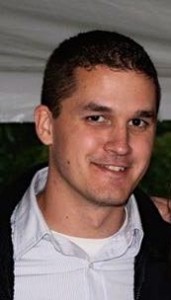
Brandon Dudley is a fiction candidate in the MFA program at Sierra Nevada College, where he is assistant fiction editor of the Sierra Nevada Review. His fiction has been a finalist in the Slice Literary Writers Conference Bridging the Gap Competition and a Million Writers Award nominee. He has had interviews and criticism published in storySouth and Fiction Advocate. He lives in Maine with his wife and two sons.

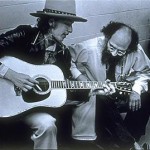
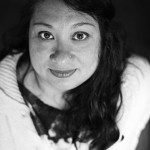
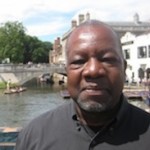
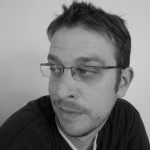
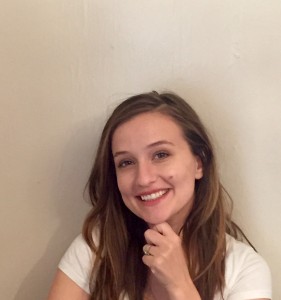 and, with their practices, making its inhabitants gravely ill.
and, with their practices, making its inhabitants gravely ill.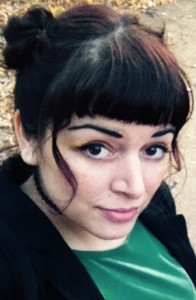 Tara E. Tomaino is a student of poetry at Sierra Nevada College’s low-residency MFA program and the Poetry Editor for the Sierra Nevada Review. She enjoys spending quality time with her cat and her never ending rolodex of thoughts in Dark City (Asbury Park), NJ.
Tara E. Tomaino is a student of poetry at Sierra Nevada College’s low-residency MFA program and the Poetry Editor for the Sierra Nevada Review. She enjoys spending quality time with her cat and her never ending rolodex of thoughts in Dark City (Asbury Park), NJ.

